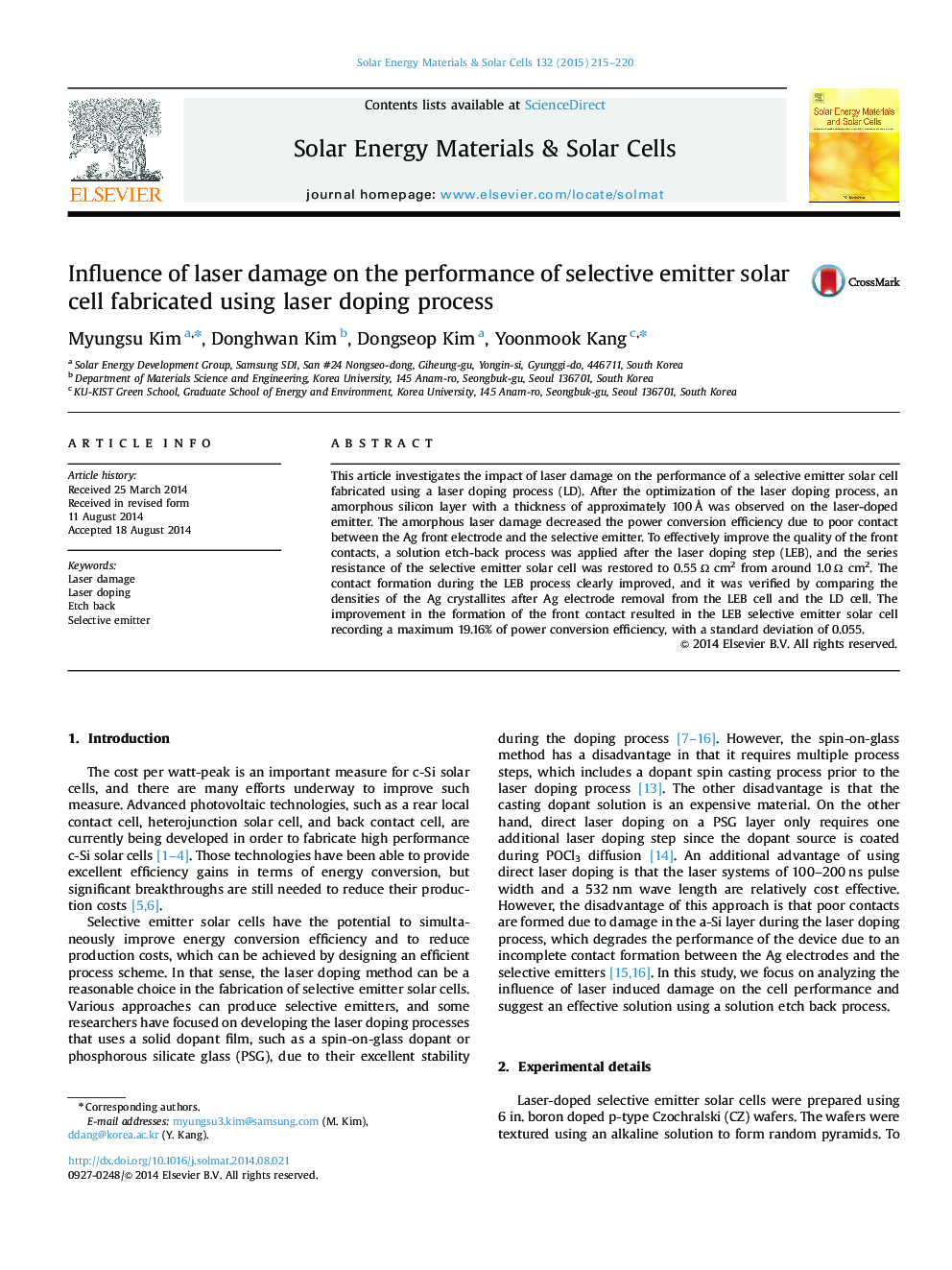| Article ID | Journal | Published Year | Pages | File Type |
|---|---|---|---|---|
| 6535391 | Solar Energy Materials and Solar Cells | 2015 | 6 Pages |
Abstract
This article investigates the impact of laser damage on the performance of a selective emitter solar cell fabricated using a laser doping process (LD). After the optimization of the laser doping process, an amorphous silicon layer with a thickness of approximately 100Â Ã
was observed on the laser-doped emitter. The amorphous laser damage decreased the power conversion efficiency due to poor contact between the Ag front electrode and the selective emitter. To effectively improve the quality of the front contacts, a solution etch-back process was applied after the laser doping step (LEB), and the series resistance of the selective emitter solar cell was restored to 0.55 Ω cm2 from around 1.0 Ω cm2. The contact formation during the LEB process clearly improved, and it was verified by comparing the densities of the Ag crystallites after Ag electrode removal from the LEB cell and the LD cell. The improvement in the formation of the front contact resulted in the LEB selective emitter solar cell recording a maximum 19.16% of power conversion efficiency, with a standard deviation of 0.055.
Related Topics
Physical Sciences and Engineering
Chemical Engineering
Catalysis
Authors
Myungsu Kim, Donghwan Kim, Dongseop Kim, Yoonmook Kang,
